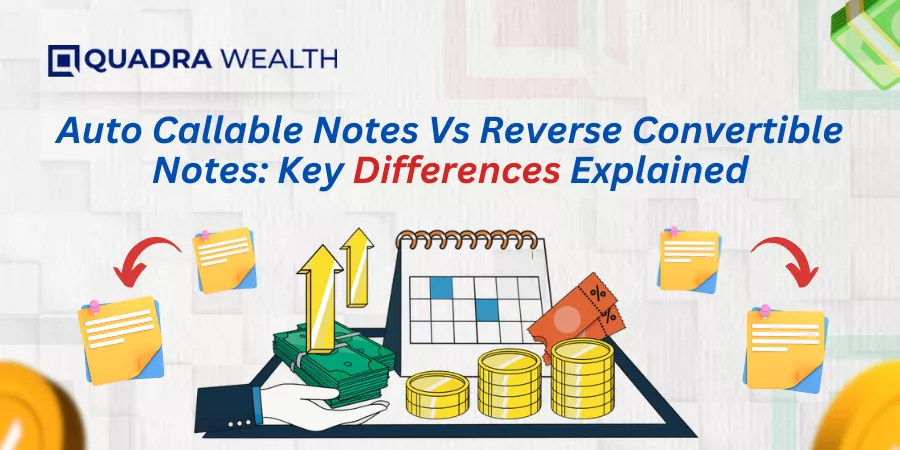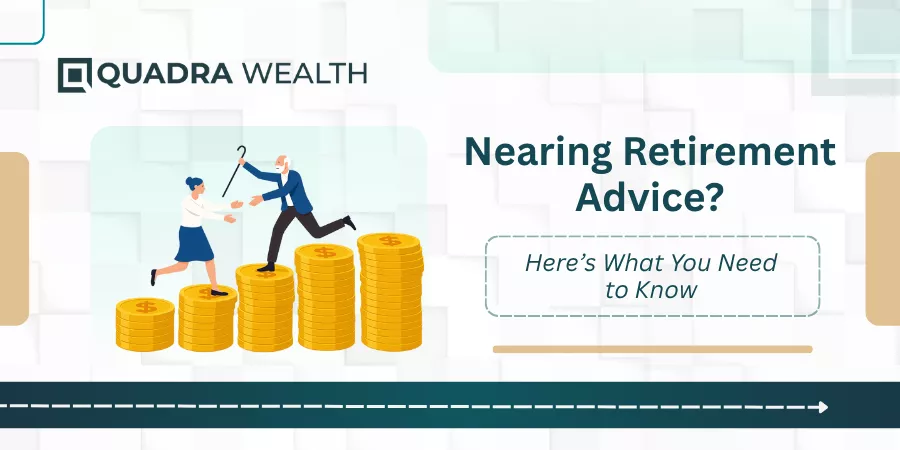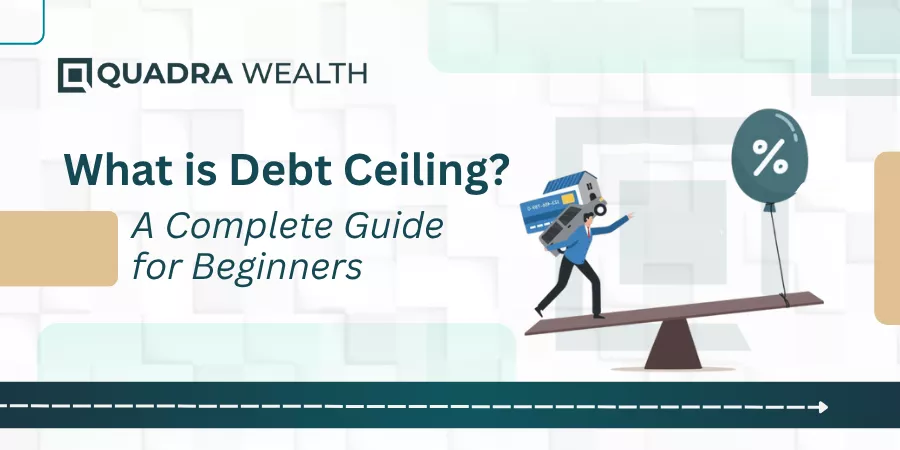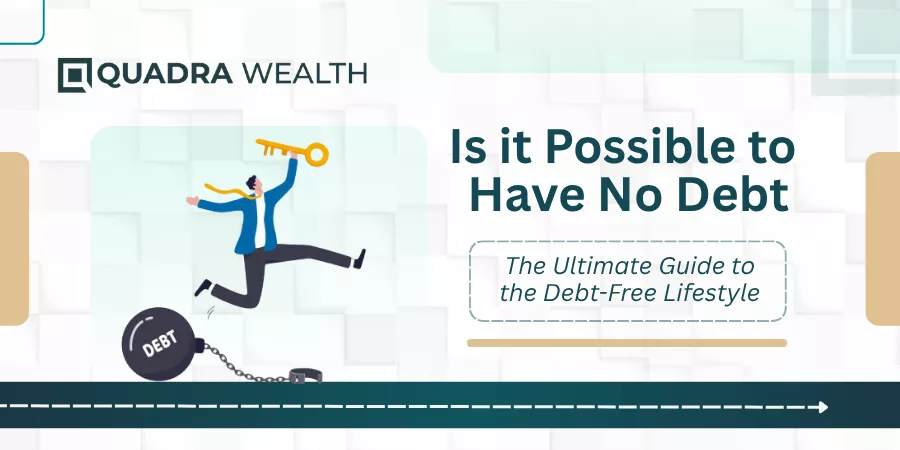Introduction
An auto callable note is a type of structured note with an auto-call feature that gets embedded in the note by the product issuing firm. Here, the note underlies equity or derivative-based assets.
The asset allocation here comprises debt, equity, bonds, indexes, and currencies to name a few. The assets get observed on said observation dates as against pre-determined achieve targets.
In investment parlance, the purchase points of underlying assets of autocallable notes are compared over specific barrier prices that are considered as final prices or sale unit prices of the underliers. When the price prices soar to reach the final sale points, the notes get redeemed. If this event doesn’t happen, the autocall observation gets carried forward to the next quarter.
On the contrary, Reverse Convertible notes are notes wherein you have underliers the notes are tied with. If the performance of underlying assets reaches specific levels, then investors get their principal amount plus interest earnings. If the underliers perform below expected values, then the entire cap investment of the investor converts into equity-based shares or stocks.
Do you want to know more interesting differences covering Auto Callable Notes Vs Reverse Convertible Notes? Well then, we have got you covered here:
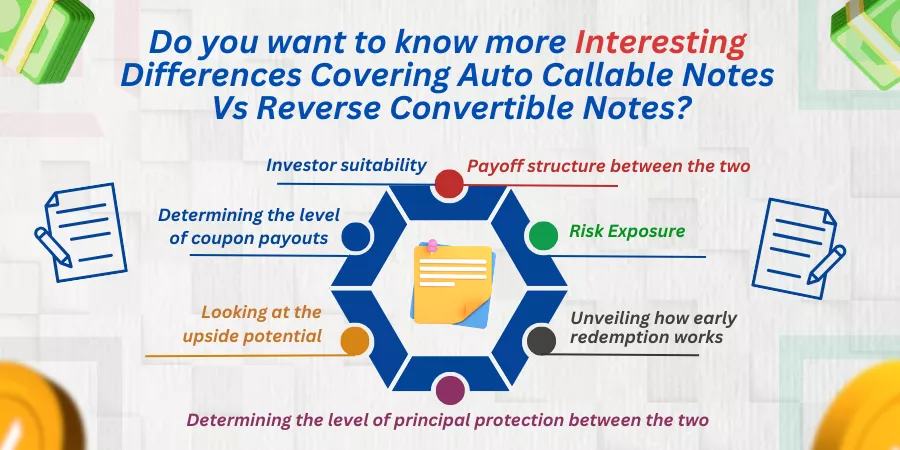
Payoff structure between the two
If auto-called and the prices reach specified levels, then the notes mature early and this is even before the term of the asset. If the notes are not auto-called, then they receive the principal and interest earnings the investor had initially signed up for.
Whereas, with respect to Reverse Convertible Notes, things work differently here. If the underlying assets reach specified barriers or if final sale points exceed their initial purchase points before the onset of the note’s maturity, then the investors receive their principal and coupon earnings as a cash settlement or as a wireless bank settlement.
The underlying stock or assets can have a mix of ‘call or put options to leverage the initial investment value for investors across the primary or secondary market.
On the contrary, if the assets fail to pick up even during maturity, then the investment automatically converts into a stock that is of a lesser value as compared to the initial level of investment.
Risk Exposure
With respect to Auto Callable notes, you can avail a certain degree of principal protection as long as the value of the asset does not decline significantly. The notes can also be redeemed prior to the maturity of the investment. Therefore, the upside returns of future equity gets limited or down-sided for investors.
Whereas, in Reverse Convertible notes or RCNs, if the value of underlying assets fails to reach the specific knock-in barriers, then the investment automatically converts into stocks or shares, meaning the asset itself. Therefore, if the value of RCN underliers declines gradually, then there is no principal protection or cap security for investors on the whole.
You can have a word with the product issuer while the notes are getting incubated under your name. You can discuss the initial price, volatility or coupon rate the investor will receive as a downside protection.
Unveiling how early redemption works
When the prices of assets for auto callable notes reach their knock-out levels as seen during observation dates or said periods, then the notes are redeemed early for the investors. Then, they can receive their principal amount plus their coupon earnings for the term of investment they were holding up until the auto call period. However, the investors cannot further participate in the upside potential of underlying equity as the note redeems once it is successfully auto-called.
Whereas, with respect to Reverse Convertible Notes or RCNs, the investors might have to hold the notes until maturity. Here, they cannot opt for an early exit and the risks remain applicable to their asset value which is made known to the investor only during the time of maturity. The underliers can h
This is whether he would receive the settlement as cash or receive the stock and shares in lieu of the principal investment.
Determining the level of principal protection between the two
Autocallable notes lend a better degree of principal protection with the returns being linked to the performance of the underlying assets of the notes. The investors may not receive the principal investment only if the asset value falls significantly.
Whereas, in the case of Reverse Convertible notes, the principal investment of the investors is directly exposed to the downside risk of the underlying equity. If the linked-in assets reach specific knock-in levels, then investors get their principal plus interest as a bank settlement.
On the contrary, if the linked-in assets do not perform as expected the principal investment directly converts into equity that may or may not equalize the original investment you have given up over your RCNs. Therefore, you do not have principal protection here.
Looking at the upside potential
Autocallable notes have a limited potential against the participation of upside equity. This is mainly because the notes can be redeemed earlier than the maturity date. This is when auto calls are activated and the assets reach the expected values as set.
Once the notes are redeemed, the interest and capital payout gets settled to the investor’s account and if the underlying assets appreciate further, the investors would not be able to encash in or capitalize on the same.
Whereas, in the case of Reverse Convertible Notes or RCNs, the investors get a higher spree with respect to enhanced coupon payments. The upside potential to receiving attractive coupons is to offset the capital loss when the investment money converts into equity if the knock-ins are not reached for underlying assets that are linked with RCNs.
However, if the underlying assets of RCNs reach specific knock-ins, then investors receive their principal investment as well as their accumulated coupon earnings on the investment portfolio.
On a genral note, you have a combination of a put option and a debt for every structured note to leverage its returns as the note reaches maturity.
Determining the level of coupon payouts
The coupon payments for auto-callable notes are relatively lower. The payouts are contingent on the performance of the underlying assets the notes are linked with.
Whereas, with respect to RCNs, the coupon payments that are made to investors look attractive and higher in value. This is to offset the capital loss investors might face when their investment value converts into equity.
Investor suitability
Whereas, RCNs are meant for investors who have a better degree of risk tolerance and can handle capital loss if the RCNs do not fare well in the market. Here, they take the adrenaline spine of seeing the note’s underlying assets to volatile bearish cum bullish trends of the equity market.
The Bottom Line
In a nutshell, autocallable notes suffice for early redemption and provide a decent level of capital protection to investors on the whole.
Whereas, RCNs provide higher coupon payouts to investors to help them offset capital loss in case of redemption.
Which of the two is your favorite? Do mention it in the comments below!
Frequently Asked Questions or FAQs
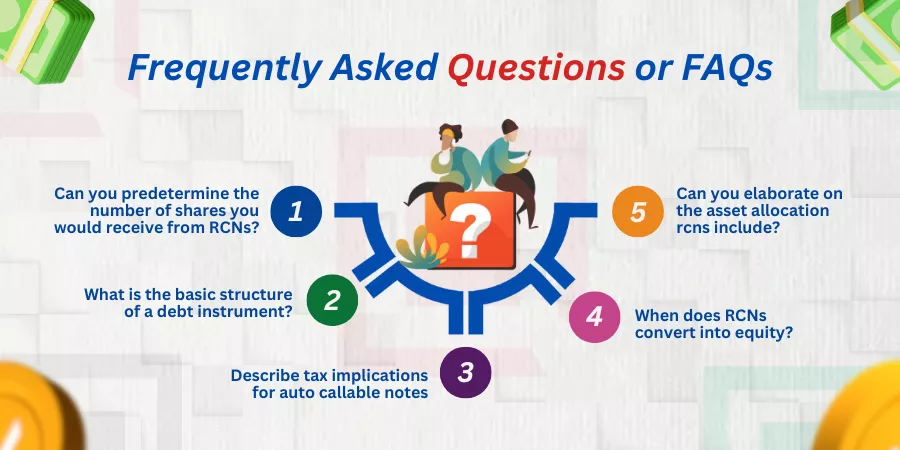
Can you predetermine the number of shares you would receive from RCNs?
Answer: No, it is the product issuing firm that applies a specific formula to convert the principal payment into equity. A knock-in structure is embedded into every RCN note and the prices have to reach the knock-in levels as predesigned by the product issuers. And, this becomes the deciding factor whether the investor would receive his original investment back as a wireless settlement or as equity based derivatives.
What is the basic structure of a debt instrument?
The note pays interest or coupons against the debt which is considered as the original investment amount while enhanced interest payments or higher coupon rates are tied to the performance of the underlying assets the notes are linked with. Here, you could opt for equity based returns or fixed income coupon payouts.
Describe tax implications for auto callable notes or for other structured products.
Answer: You must decide if the returns on investment for auto callable notes are treated as ordinary income levels. In this case, higher amoounts of tax can be levied on the potential coupon bearing payouts investors receive. When the interest rates are low and limited to the coupon payments an investor receives quarterly, then an ordinary income tax could wipe out the potential returns on investment.
On the other hand, when the returns on notes are converted into capital gains income, then lower tax slabs can be applied on the portfolio as such. The investor could have a better cash flow with respect to the returns he receives on the notes.
When does RCNs convert into equity?
Answer: The knock-in prices must exceed the initial purchase points as the stock closes. If that does not happen due to the volatility of the underlying assets or so, the maturity on rcns converts the rcn investment into equity.
The price of the stock is used to determine whether the investor would get his initial investment back along with coupon-bearing payouts.
The financial institutions maintain a secondary market overview to see how the coupon interest rate fluctuates vis-a-vis the original cost of the assets.
Can you elaborate on the asset allocation rcns include?
Answer: You can have two structures comprising high-yield bonds and underlying equity derivatives. To receive 100 percent coupon payments or higher yields on rcns, the investor must be willing to give up a portion of his cap investment that converts into equity. You ÷ principal investment with returns of rcns to determine how many shares the investor would get if the knock in levels are not reached by the asset.

